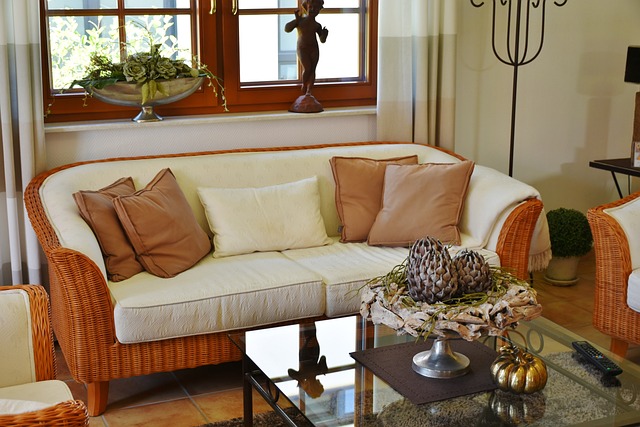Maintaining personal space in shared college housing is crucial for a positive experience. Students must balance privacy and social interaction through boundary setting, considering emotional comfort, and establishing dedicated study areas. Effective strategies include open communication, respecting quiet hours, and using technology to create comfortable living spaces that support both solitary relaxation and meaningful connections. By following these student living tips, students can create an ideal environment for academic pursuits and a fulfilling social life on campus.
Maintaining personal space in college housing is a delicate balance, especially with bustling social lives and shared living environments. As students navigate their new homes away from home, understanding and defining their boundaries is crucial for a healthy and comfortable stay. This article explores strategies to optimize privacy in student housing, from creating a cozy haven to communicating needs effectively and leveraging technology as an aid. Discover tips for balancing social life and personal space, ensuring a fulfilling college experience.
- Understanding Personal Space: Defining Your Boundaries in College Housing
- The Impact of Social Life on Privacy: Balancing Act for Students
- Creating a Comfortable Living Environment: Tips for Optimizing Your Space
- Communicating Your Needs: Talking to Roommates and Residence Hall Staff
- Technology as an Aid: Tools to Help Maintain Privacy in Shared Spaces
Understanding Personal Space: Defining Your Boundaries in College Housing

Maintaining personal space is an essential aspect of college life, especially in shared housing where balancing privacy and social interaction can be challenging. Understanding your boundaries and defining what constitutes a comfortable living environment is crucial for students aiming to have a positive experience during their time on campus. Personal space goes beyond just physical dimensions; it encompasses emotional and mental comfort, enabling students to relax, study, and recharge effectively.
In college housing, finding the right balance between social engagement and solitary time is key. Comfortable living spaces should allow for private moments while also fostering meaningful connections with roommates and neighbors. Students can establish their boundaries by communicating expectations, setting aside dedicated study areas, and respecting quiet hours. By considering these aspects, students can create a harmonious environment that supports both their academic pursuits and social life, ensuring they have the best possible experience during their college years.
The Impact of Social Life on Privacy: Balancing Act for Students

In the vibrant and bustling college environment, students often find themselves navigating a delicate balance between their social lives and maintaining a sense of privacy in shared living spaces. As social butterflies, students naturally thrive on interactions with peers, but this can sometimes clash with the need for personal space and comfort. Balancing student social life and privacy is an art that every resident must master during their time in college housing.
Comfortable living spaces allow students to retreat from the hustle and bustle of campus activities, providing a sanctuary where they can recharge and concentrate on studies or simply enjoy some ‘me time’. However, the constant social buzz can make this difficult, especially in dorms with common areas. Student living tips often emphasize finding ways to create personal bubbles within shared spaces while still embracing the camaraderie that comes with college life. This might involve setting clear boundaries, establishing early routines, and effectively communicating with roommates to ensure everyone’s privacy needs are respected.
Creating a Comfortable Living Environment: Tips for Optimizing Your Space

Creating a Comfortable Living Environment: Tips for Optimizing Your Space
In college, balancing privacy and socializing is an art, especially when sharing living spaces with peers. To establish a cozy atmosphere in your dorm or apartment, start by personalizing your space. Add touches that reflect your style—posters, plants, or soft lighting can instantly make it feel like home. Organize your belongings efficiently to avoid clutter; a tidy space contributes to mental clarity and tranquility. Consider using storage solutions like baskets or shelves to keep items in their place.
Privacy is paramount for recharging between social events, so utilize dividers, curtains, or door locks where possible. Create designated study areas away from common spaces to focus without distractions. Remember, a comfortable living environment supports both your academic success and social life—it’s about finding harmony between personal downtime and student engagement.
Communicating Your Needs: Talking to Roommates and Residence Hall Staff

Maintaining a sense of personal space is crucial for students navigating college housing, especially when balancing a vibrant social life and comfortable living arrangements. Open communication is key to achieving this harmony. Students should initiate conversations with both their roommates and residence hall staff to set expectations early on. Discussing privacy needs, study habits, and noise levels can help establish boundaries and ensure everyone feels respected and heard.
Residence hall staff can provide valuable guidance and offer resources for mediating conflicts or addressing concerns. Students are encouraged to reach out if they need assistance balancing their social life with the desire for personal space in college housing. These conversations foster a collaborative environment, ultimately contributing to a more peaceful and productive student living experience.
Technology as an Aid: Tools to Help Maintain Privacy in Shared Spaces

In today’s digital age, technology offers numerous tools to help students maintain a comfortable balance between their personal space and social lives in college housing. From noise-canceling headphones to smart home devices, there are various options available to create a peaceful atmosphere in shared living spaces. Apps designed for roommates can facilitate open communication about common areas, schedules, and boundaries, ensuring everyone feels respected and heard.
Additionally, privacy screens, foldable partitions, or even well-placed furniture can physically separate personal zones within communal spaces. Virtual privacy tools like noise-canceling virtual reality (VR) headsets or focus modes on computers can also help students immerse themselves in tasks and study without distractions. Integrating these technological aids into student living tips can significantly contribute to a harmonious social dynamic and make college housing more comfortable for those seeking to balance their personal space with an active student social life.






